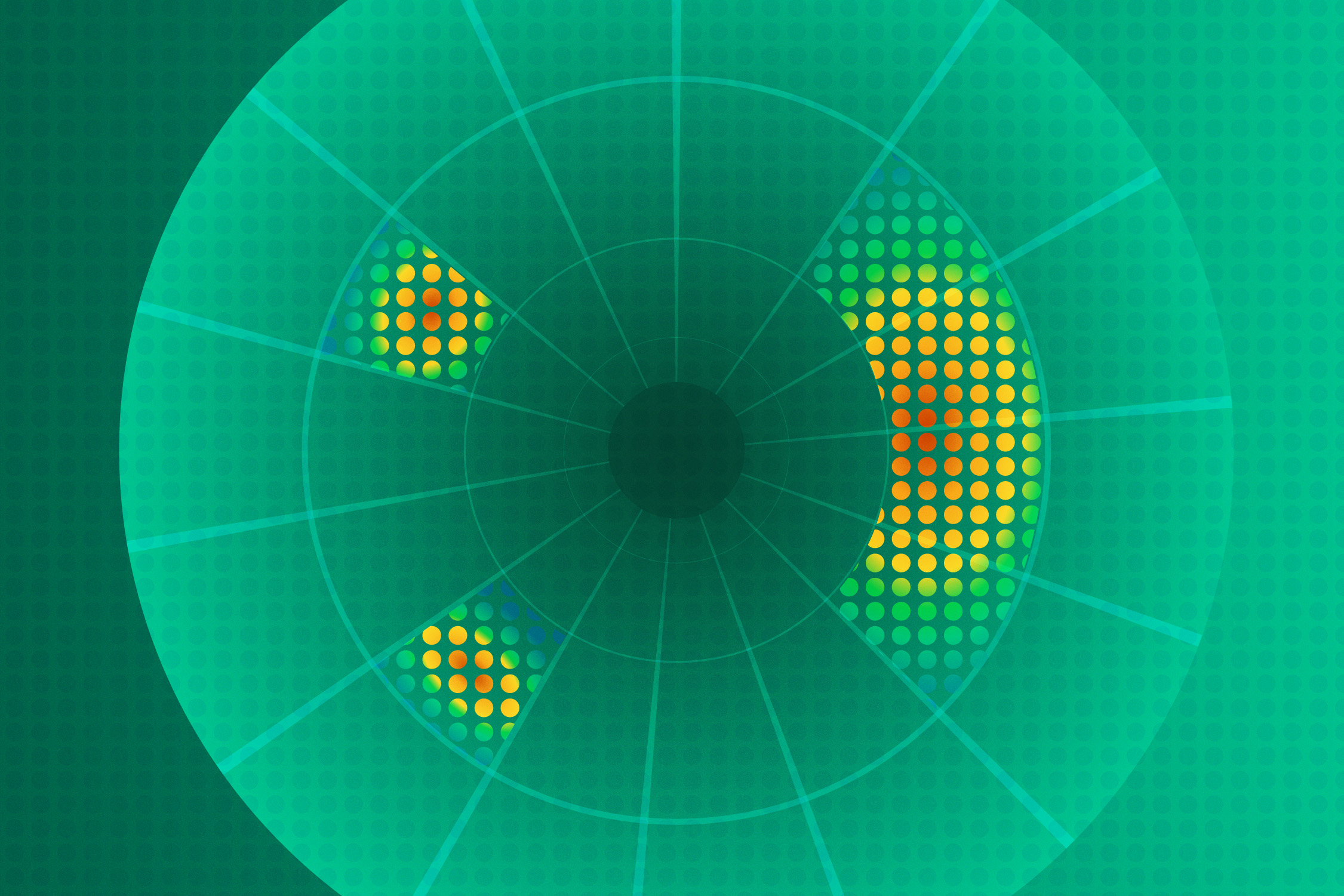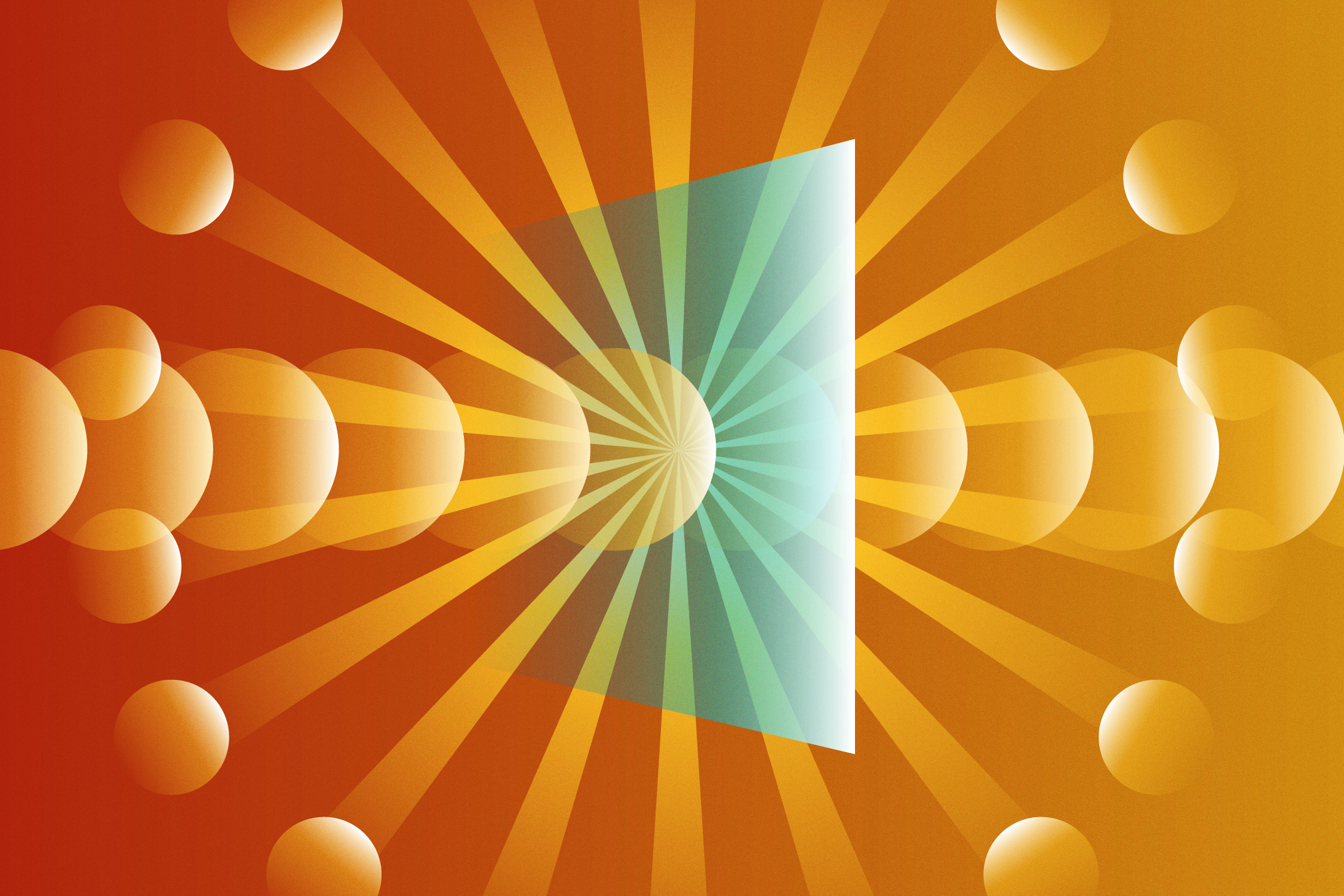Positive Vibes
Focused sound waves for deep-brain stimulation therapy
- Craig Tyler, Editor

Now hear this: Sound waves allow researchers to see deep inside objects too difficult or dangerous to cut into for a direct look. The Laboratory’s Dipen Sinha has made a career of it, pioneering one successful application after another, and is now working toward his crowning achievement to date, using sound waves to treat—not just diagnose, but treat—just about every manner of debilitating brain condition commonly known.
What began during the first Gulf War with acoustic techniques to scan for chemical weapons inside unexploded munitions has since evolved into a series of imaginative solutions to other vexing peer-inside problems. Sinha developed acoustic methods for assessing how much water, oil, or natural gas is produced from any oil well. He subsequently aimed sound beams at eggs to identify those carrying salmonella. He worked out a way to test for glaucoma by measuring vibrations caused by collimated sound waves impinging imperceptibly on the eye. He upgraded biological laboratory research by adding acoustic capabilities to flow cytometers—machines that separate cells of different types from a mixed tissue sample. Then he turned his attention to the human brain.
Initially, Sinha showed that he could measure intracranial pressure (ICP)—the fluid pressure in the brain—using sound transducers placed against the subject’s temples to produce and measure microscopic, ICP-dependent vibrations from the skull. Elevated ICP is often the key piece of information needed to properly diagnose life-threatening, combat-related and other head-trauma injuries, but the current method of monitoring it requires an enormously risky procedure. Doctors must drill into the skull and insert a catheter deep into the brain’s interior, exposing the patient to a serious risk of potentially fatal infection. Yet Sinha’s acoustic vibrations, imperceptible to the patient, provide ICP monitoring with none of the risk. They even reveal subtle changes in the ICP caused by, for example, a simple tilting of the head—such as when a driver begins to nod off at the wheel.

But sound waves are good for more than just noninvasive measurements in the brain. They can actually stimulate neurons with acoustically driven pressure waves, causing them to fire in much the same way as electrode-delivered impulses do. And that opens the door to a whole slew of potential medical advances.
“We in the field can already trigger neurons in a petri dish with sound,” says Sinha. “And we already have good evidence that equivalent electrical stimulation can relieve a number of serious disorders—including Parkinson’s disease, chronic pain, and deep depression—and even increase creativity. It’s not such a big leap to expect the same treatment to work with sound beams, without all the complications associated with inserting electrodes into the brain.”
Sinha refers to a neurosurgical technique known as deep-brain stimulation (DBS), which is just what it sounds like. In practice, electrodes placed deep in the brain are connected to wires leading to the cranial equivalent of a pacemaker. The device generates controllable electrical signals designed either to disrupt overactive brain circuits or stimulate underactive ones, wherever they may reside. For the tremors of Parkinson’s disease, the electrodes are placed in the thalamus; for depression, in the mood center of the brain known as Area 25; for Alzheimer’s disease, in regions associated with memory, cognition, or neurotransmitter activity. (DBS treatment is currently approved for Parkinson’s and other movement disorders as well as obsessive-compulsive disorder; it is currently under study for depression, Alzheimer’s, and chronic pain.) Not surprisingly, the success of DBS relies on properly positioning electrodes within the problem area of the brain.
With sound waves, one or more acoustic generators would be set up against the head and aimed at the problem area inside the brain. This produces two significant difficulties, however. The first is getting the sound waves through the skull, although Sinha has already overcome that hurdle with a highly collimated ultrasound source that, unlike other sources, produces a beam whose shape does not depend on the sound-wave frequency. That allows him to project low-frequency waves capable of penetrating the skull along a narrow column across the brain.
Of course, that’s not good enough; the sound must be restricted to a small target area in the brain and not an entire column through it. That’s the second difficulty. But Sinha has that one covered too. With a technique called parametric mixing—Sinha has seven patents for this—two crossed beams deliver the desired acoustic signal to their intersection point only. In essence, this method of sound-wave targeting could allow different people to listen to different music in the same room, and in the brain, he believes it will produce reliably targeted stimulation (or disruption, as needed) for misfiring neurons. As an added bonus, he notes that the stimulation is highly adjustable in terms of sound modulation and energy delivery, allowing doctors to optimize the treatment settings for each patient.
Sinha is not yet experimenting with actual brains, so there is much research yet to be done. But if successful, his work could spawn a welcome shift in the treatment of serious mental disorders from expensive and dangerous surgeries to comparatively inexpensive and noninvasive sonic headgear.
People Also Ask
What is deep brain stimulation?
Deep brain stimulation, or DBS, is a medical treatment approved for Parkinson's disease and under study for other conditions like Alzheimer's disease and depression. Traditional DBS involves the implantation of small electrodes into the brain to stimulate and regulate the brain’s signals. Research into noninvasive DBS, in which the electrodes stay on the outside of the skull, is promising.








